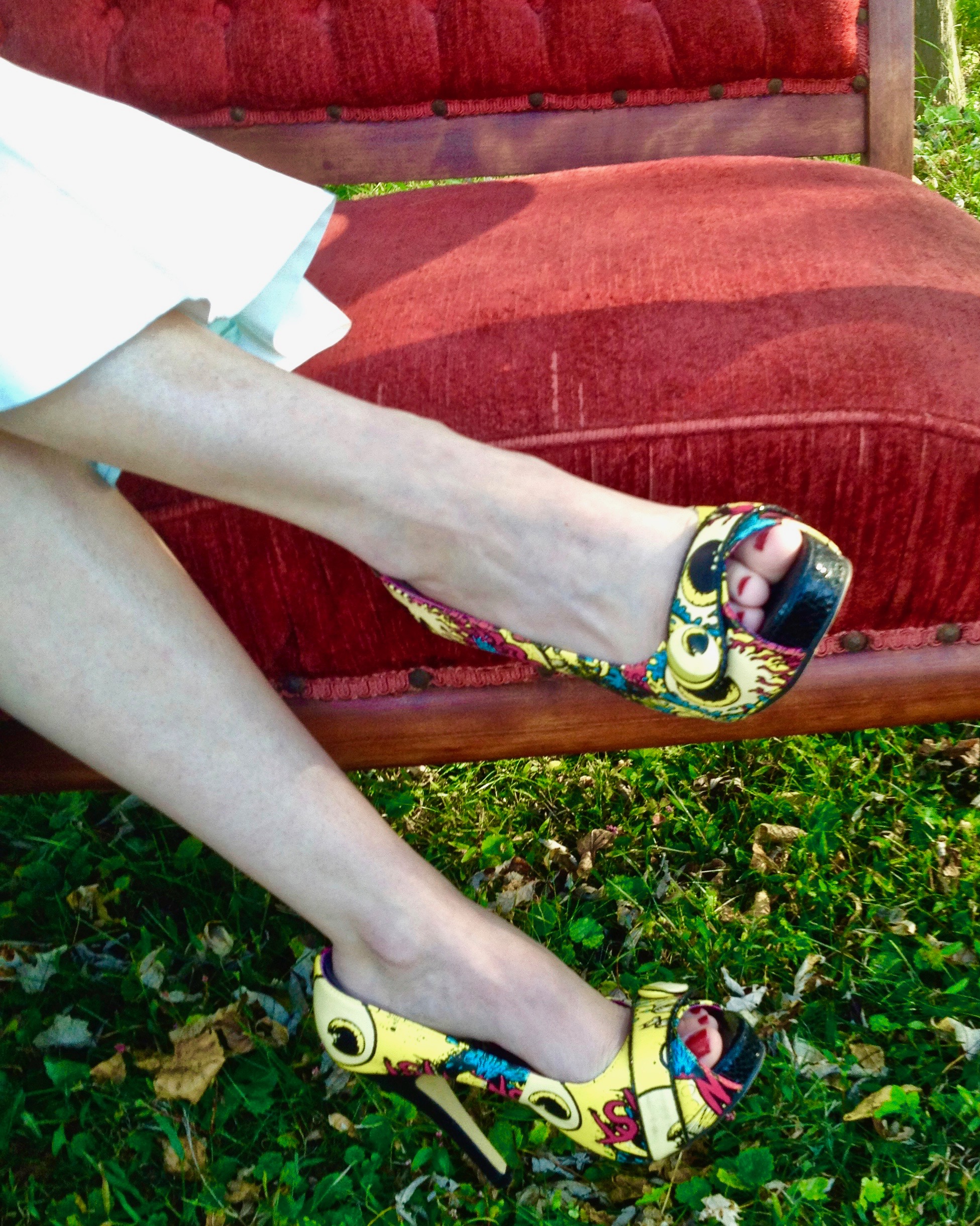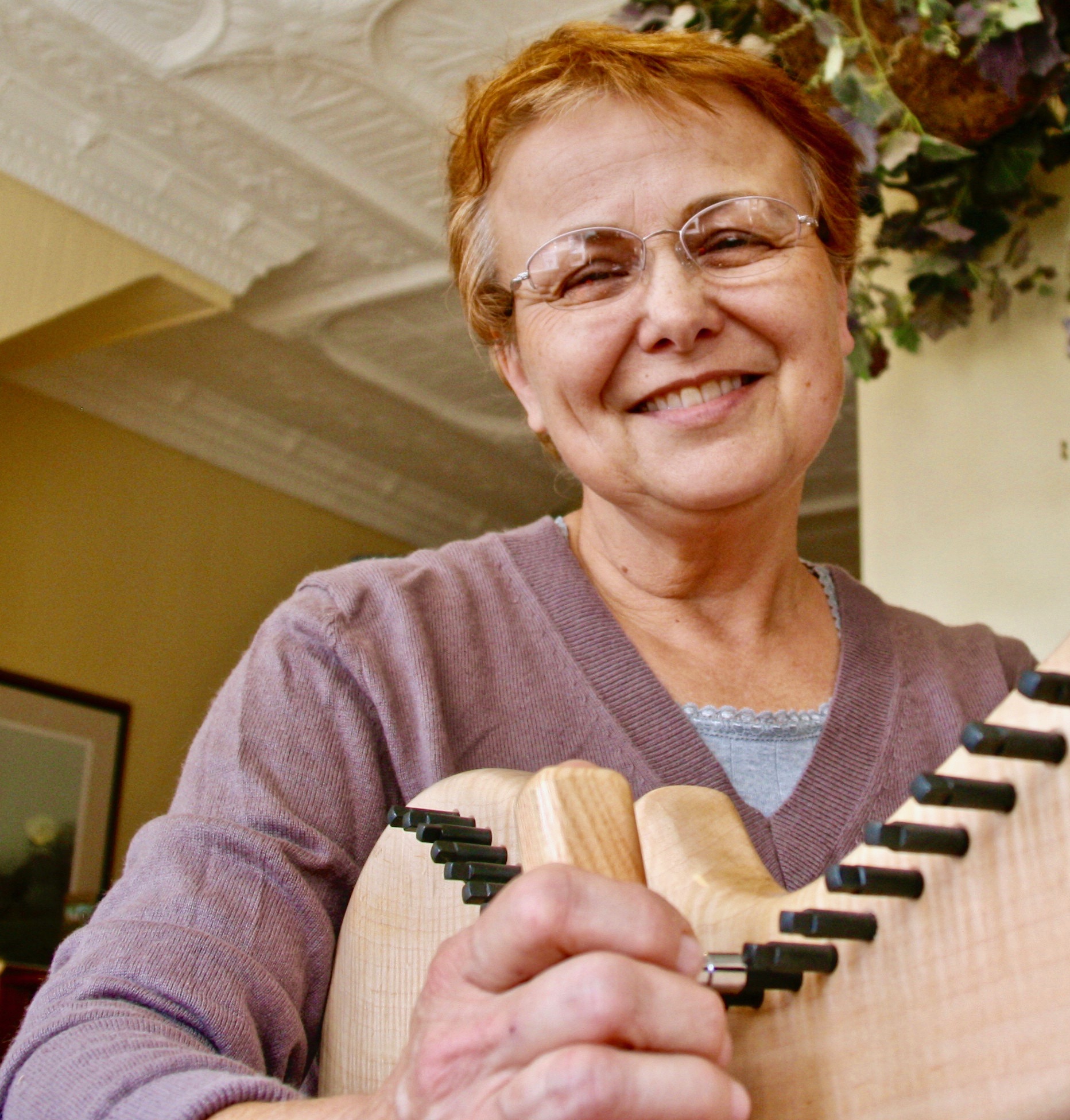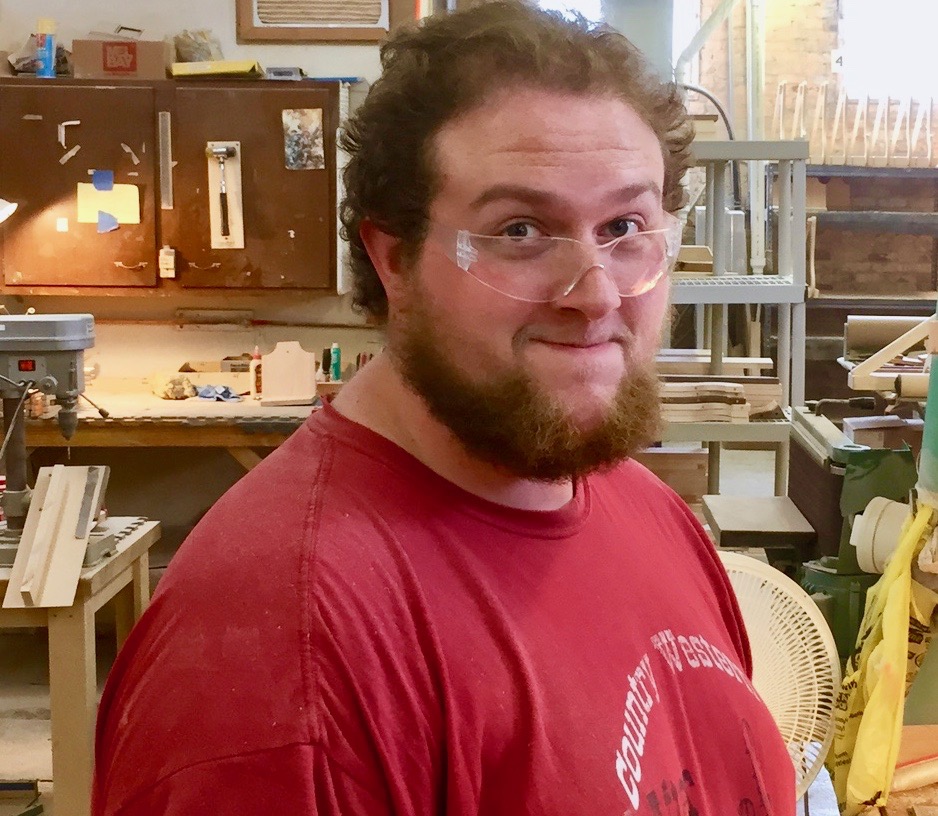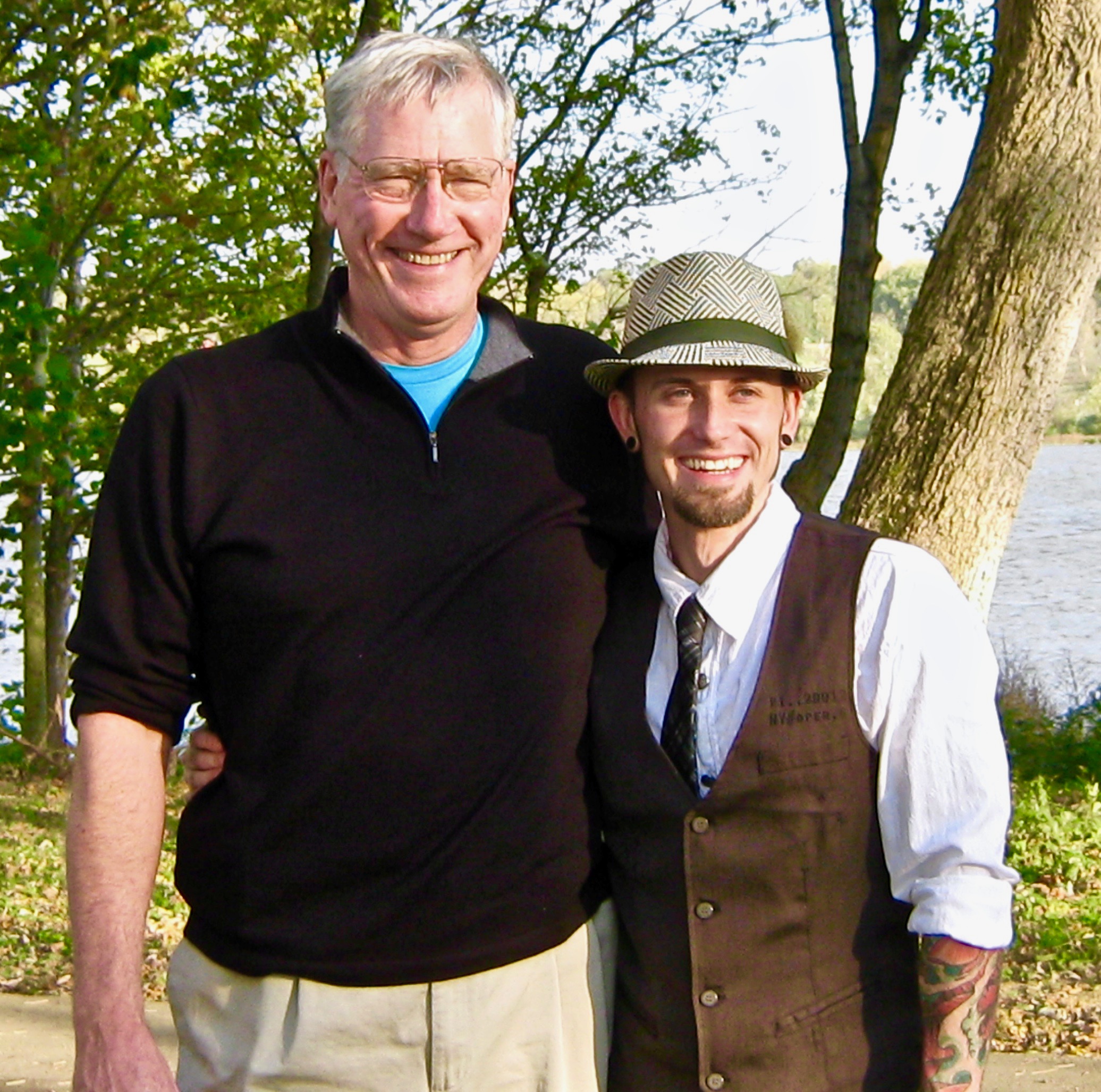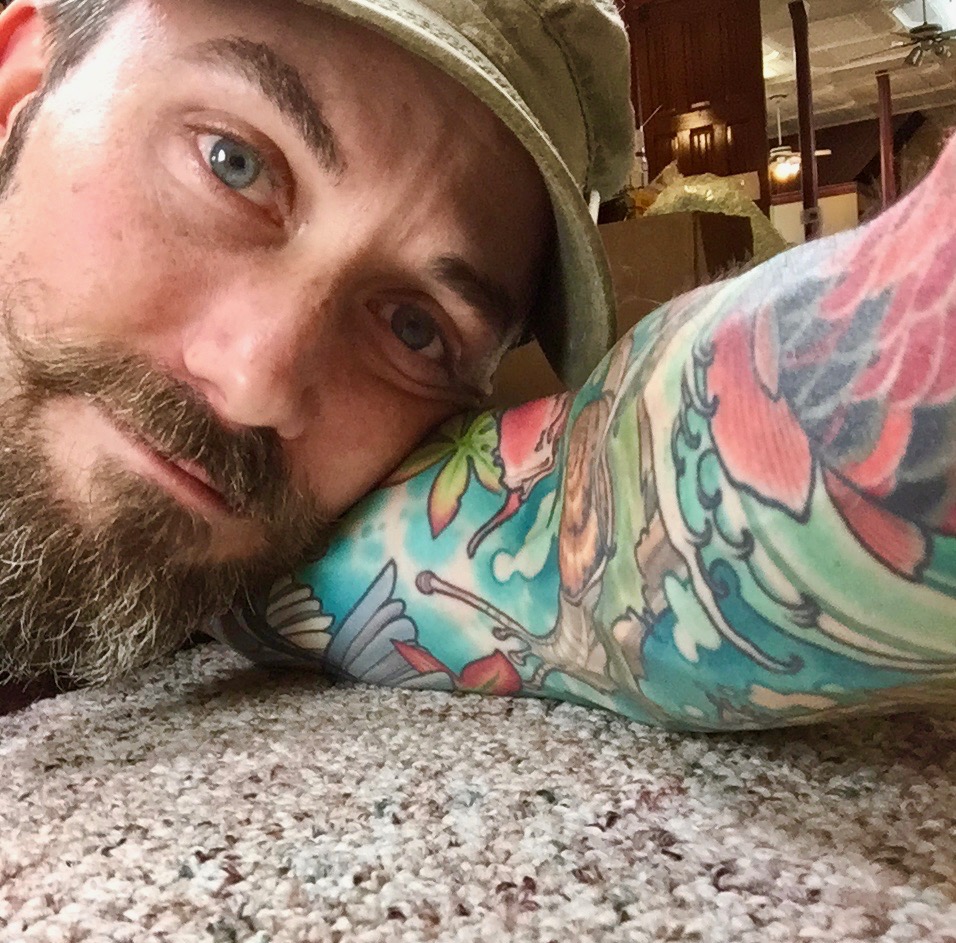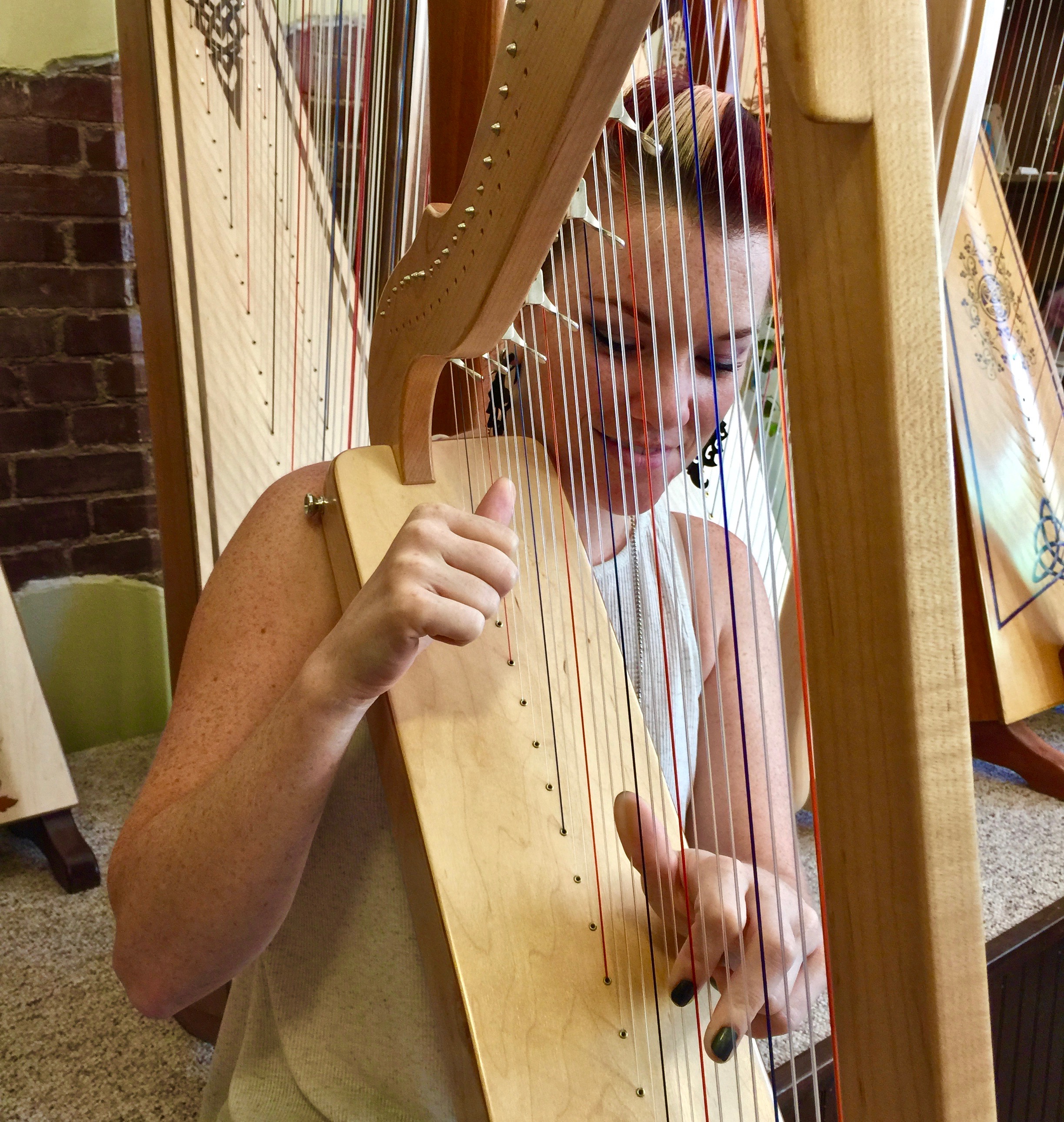This is the crack team responsible for creating your Harpsicle® brand harp.
Our Story - The Short Version
Luthier William Rees began selling harps in 1972. At that time he was living in California, teaching high school science, gigging with a band on weekends and starting a family. Building stringed instruments was something he did as a hobby and to add some income. Everything he built was made in a little corner of his garage next to the washing machine. Years passed. His reputation and family grew. When he met his current wife, Pamela, he was living between Oakhurst, California and the southern gates of Yosemite National Park. He had the Sierra National Forest, literally, in his backyard and a waterfall just across the road. It was pretty idyllic. But Pamela had figured out that building instruments was bringing in more income than teaching so in 1992 William and Pamela formed Wm. Rees Instruments (now Rees Harps Inc.) and William became a full-time luthier. Then, in 1996, fifteen year-old Garen, William's youngest son, joined William and started doing harp ornamentation. William and Pamela also added an employee, Rebecca Spellman, and a lutherie apprentice, the wonderful Jeff Lewis. The business grew dramatically.
By 1999 William and Pamela knew they needed to relocate outside of (expensive) California in order to grow the business further so they moved, along with Garen and Bryant (William's oldest son, who worked for the business for a couple of years), to Rising Sun, Indiana. They bought a 7000 square foot building, which was part manufacturing space and part retail space. The part retail, part manufacturing space was built in 1881 and the Rees' had the building completely rehabbed. They moved in June of 2000.
The business quintupled in size and by 2003, when William introduced his newest creation, the Harpsicle® Harp, to the world, things really took off. Now Rees Concert Line Harps and Harpsicle® Harps have spread around the world and our little harp lutherie just keeps chugging away. (For the much more detailed rendition of this story, see "The Long Version" below.)
Our Story - The Long Version
William Rees had been one of those artistic, musically talented, curious young people. By the time he was in his late teens he was already giging as a successful musician, while he was getting his degree in biology and earning his secondary teaching credential. He had also started to build musical instruments. William was especially fascinated by early stringed instruments and used the archives at his university to study their designs and to design his own faithful, meticulous replicas. Among many other things he built lutes, clavichords and harpsichords (because he never was one to take the easy way out.) He spent time with luthiers of classical strings, particularly violin luthiers, and to this day his instruments are strongly influenced by the principles he learned at the very beginning. In 1972, William sold his first harp. Others were to follow but he was building all kinds of stringed instruments, both historical and modern, as his skill and reputation grew.
Meanwhile, William married, started teaching high school science, and started a family. Two of his three children, now all in their mid-thirties to early forties, work in the business and even the third tried it for a while before he found his own muse. Rebecca, William's oldest, coordinates both purchasing and shipping. Garen, William's youngest, is the production manager and it is Garen who will fill William's shoes as William steps out of the business over the next year or so. Pamela, William's current wife, met William in 1990 and it was Pamela who first realized that William was making more money building instruments on the side than he was by teaching school nine months of the year. So much for teaching! In 1992 William and Pamela went full-time into building instruments and Wm. Rees Instruments, LLC (now Rees Harps Inc.) took its next big step.
They started out selling a wide range of William's instruments, including harps, at fine arts shows first in California and later all over the country. William's instruments won awards and his reputation continued to grow. Then a funny thing happened. At one point William got a little crazy and decided he was going to revolutionize the Appalachian Mountain Dulcimer by significantly improving its voice. The problem with that was that he also had to change the shape a bit and the traditional dulcimer community just could not warm to the idea even though they liked the sound. But William kept looking at that dulcimer and then at the harps he was building.
One day he went out into the garage/shop like a man on a mission. Pamela watched him from her office (aka the end of the dining room). A couple of days later he brought in his latest creation, a harp with an asymmetrical soundboard just like the dulcimers he had made. As it turns out, a harp with an asymmetrical soundboard doesn't look all that strange but it sure sounds amazing. And that right there was the real beginning. Pretty soon there was an employee, the lovely Rebecca Spellman, an apprentice, the wonderful luthier Jeff Lewis, and, in 1996, at the ripe old age of fifteen, Garen joined the business doing harp ornamentation.
Harp orders started flooding in. First there was no time to make banjos, guitars or mandolins. Then there was not enough time to make mountain dulcimers. Next hammered dulcimers fell by the wayside. William continued to crank out many hundreds of psalteries a year until, by 2003 when the Harpsicle® Harp was launched, there really was only time for harps. But something big happened along the way.
In 1999 William and Pamela realized the the business needed space to grow and that, sadly, as much as they loved living in California, with Yosemite National Park only nine miles away from their front door, they needed to be in a less expensive state. After searching and searching they decided upon Rising Sun, Indiana and purchased a 7000 square foot building and a 3000 square foot Victorian house, both built around 1881. The building has two floors (and a basement for tornados) with retail space, office space and manufacturing space. In the retail and office areas there are high, original, pressed tin ceilings which are just beautiful. William and Pamela had the building completely rehabbed and the business moved in June of 2000. Fortunately, Garen came along and Bryant, William's older son, who was working for the business at that time, did as well. Sadly, Rebecca Spellman stayed in California and Jeff Lewis returned to Michigan and started his own full-time lutherie. So, the Rees' were hiring!
Both Melissa Irwin, now Garen's wife, and Kevin Rohrbach, now our Shop Manager joined the company early on, when they were still in high school, as part-time employees. When we needed someone in clean-build, Melissa got her mom, Joann, to come in and interview. We hired her in a flash! Many of our employees have been with us for a very long time now and that's a pretty good feeling. Rebecca Brown, William's daughter and her husband, came on board in the years following and, recently, Pamela's nephew, James Tyler Grant, joined the business too so it is truly a family business with the second generation coming on strong.
And then came the Harpsicle® Harp....
William and Pamela had been thinking for a long time that one of the reasons more people don't play harp was because they could not afford to learn. There were decent (not great but decent) cheap guitars and violins in the world but unless you were trying to play a Pakistani harp-shaped object, the starting price point for harps was around $1500 at that time. Which was insane. So William thought about it. He built some experiments. He thought about it some more. He built more experiments. He thought about it some more.... You get the idea. It was a difficult problem because there are several conflicting issues: string pressure, mechanical integrity, weight, size, tone, speed to construct and price. That these things are not readily resolved is the very reason there weren't already dozens of inexpensive harps in the market. So, William kept at it. By early 2003 he thought he had the design solidified. (It has since been improved but the basics remain the same.) Pamela thought the harps should be colorful, to bring "fun" to mind, and, in a brainstorming session, one of the employees came up with "Harpsicle" for the branding. William and Pamela didn't know it then but a monster was born.
Since then thousands upon thousands of Harpsicle® Harps have shipped to dealers and direct to customers all over the world. Rees Concert Line Harps have followed in their wake. Lots more people are playing harps and harps are going to lots more places than William ever imagined when he built that first little Harpsicle® Harp.
Now we are getting ready for the next generation. Over this coming year or so William will be retiring out of the business. Pamela will stay in for a while longer but she will be getting out too. Garen and Melissa, who already run the business on a day-to-day basis, will take the whole thing. Don't worry, you will still probably see William posting several times a day to our Instagram account. Pamela, who has another career underway, will be off on another tangent but will pick-up the phone when Melissa calls. After all, William and Pamela live just two blocks from the business so they will be easy to find. Still, you won't need them. Garen and Melissa will have your beautiful new Rees Concert Line Harps and Harpsicle® brand harps safely in their hands.




